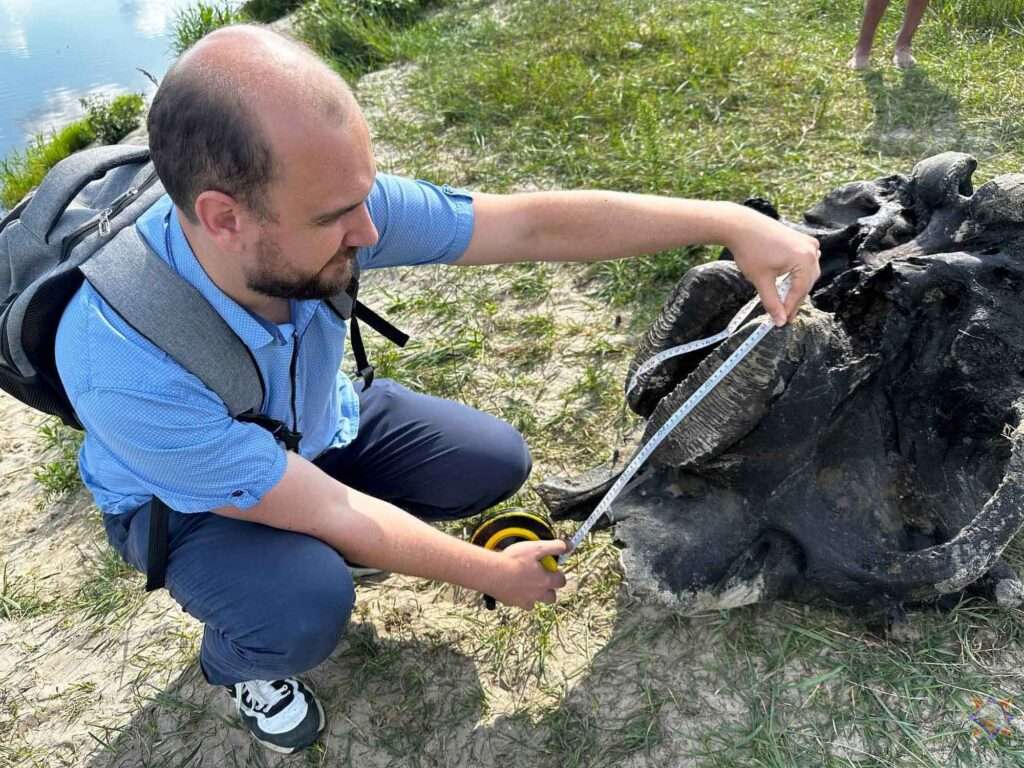This is the huge mammoth “skull” pulled by divers from the bed of a Belarusian river.
The find comes as thawing permafrost in Siberia reveals a treasure trove of ancient beasts, with treasure hunters heading to the region to illegally gather ivory tusks to flog to East and Southeast Asian customers.
In those parts of the world, the tusks are ground into powder and then marketed as medicine.
There is no permafrost in Belarus, but fossils are commonly found on riverbeds, which provide a natural pathway for water to transport and deposit sediments.
Over time, these sediments can accumulate and bury dead organisms, preserving them as fossils.
The millennia-old remains were pulled from the Besed River near the village of Svetilovichi, Vetkovsky district, on 1st August.
Experts called to examine the find confirmed that the blackened lump was indeed a fossilised mammoth part.

It is not clear what part of the mammoth the fossil shows. However, it appears to be the animal’s skull.
The mammoths were a group of large, extinct elephants belonging to the genus Mammuthus.
They lived during the Pleistocene epoch, which began around 2.6 million years ago and ended approximately 11,700 years ago with the onset of the Holocene epoch.
During this time, mammoths were distributed across various regions of the world, including parts of Europe, Asia, North America, and northern Africa.
The exact timing of the extinction of mammoths varied depending on the species and the region they inhabited.

Some mammoth species, like the woolly mammoth (Mammuthus primigenius), are known to have survived until around 4,000 years ago on certain isolated Arctic islands.
However, the majority of mammoth populations went extinct around the end of the Pleistocene, approximately 11,700 years ago, likely due to a combination of climate change and human hunting pressure.
The Ministry of Emergency Situations of Belarus said in a statement on 1st August: “Today at 2.10pm, divers from the Gomel Regional Emergency Management discovered animal remains during an examination of the waters of the Besed River in the village of Svetilovichi, Vetkovsky district. According to their assumptions, these remains belonged to a mammoth.
“Specialists from the Gomel Palace and Park Ensemble Museum were called to the site and confirmed this hypothesis.”

To find out more about the author, editor or agency that supplied this story – please click below.
Story By: William McGee, Sub-Editor: Marija Stojkoska, Agency: Newsflash
The Ananova page is created by and dedicated to professional, independent freelance journalists. It is a place for us to showcase our work. When our news is sold to our media partners, we will include the link here.




